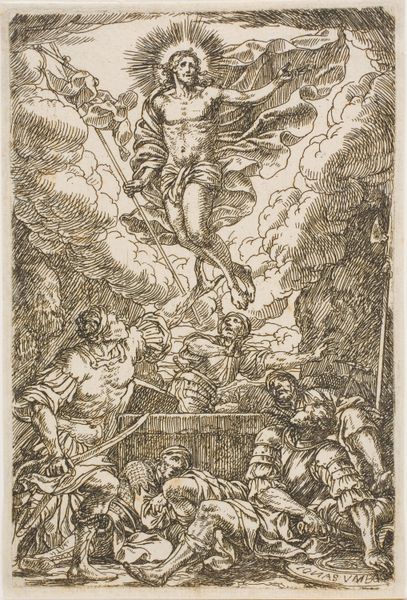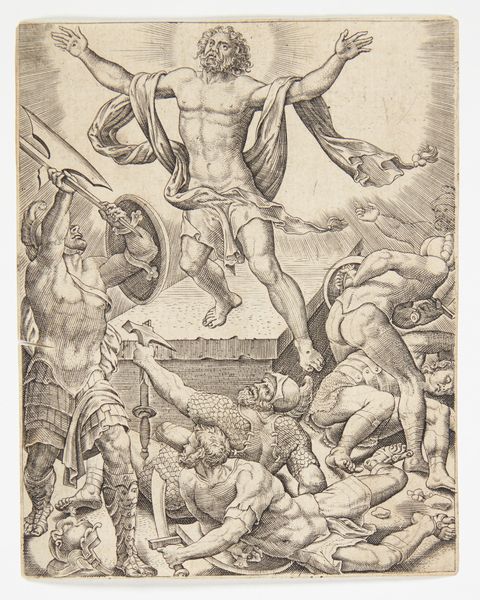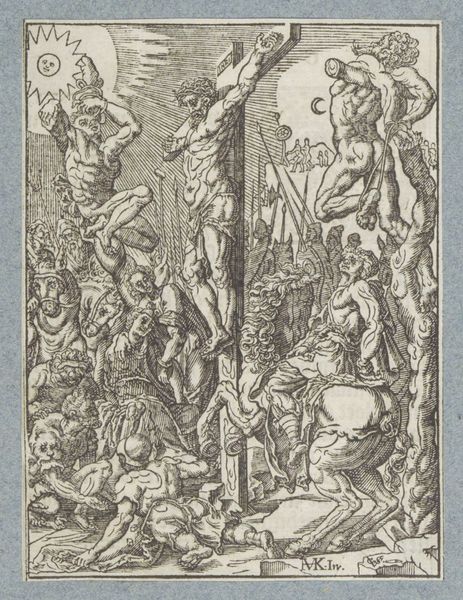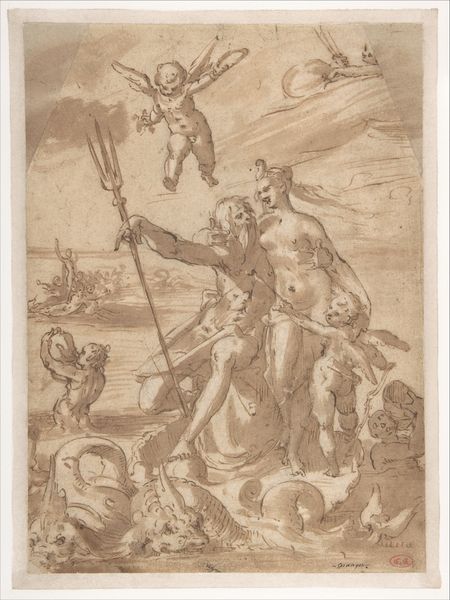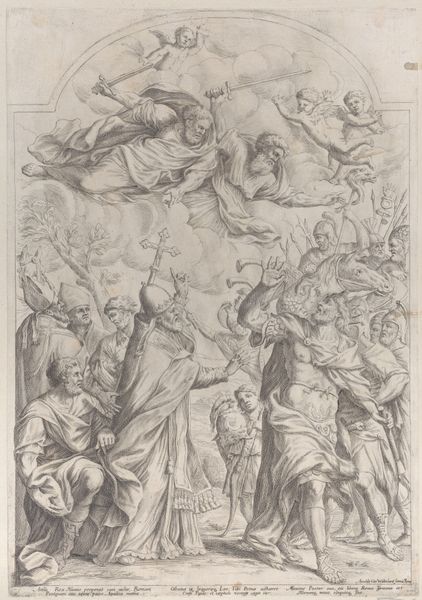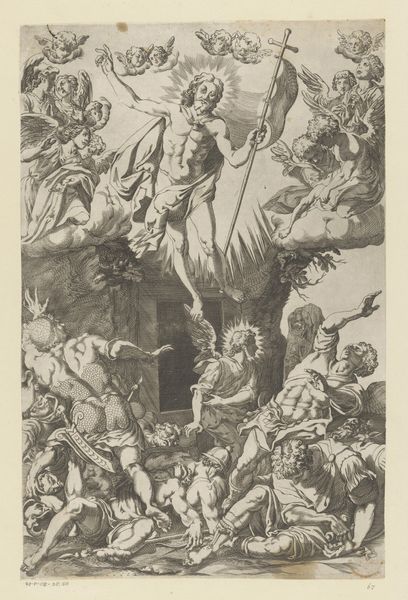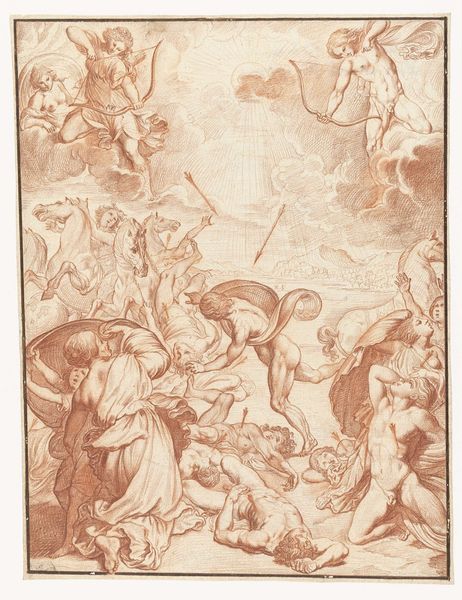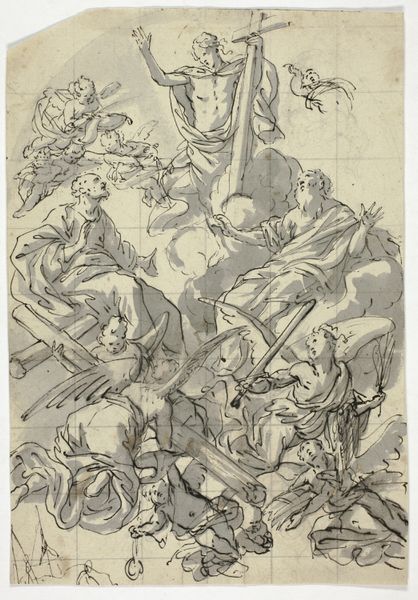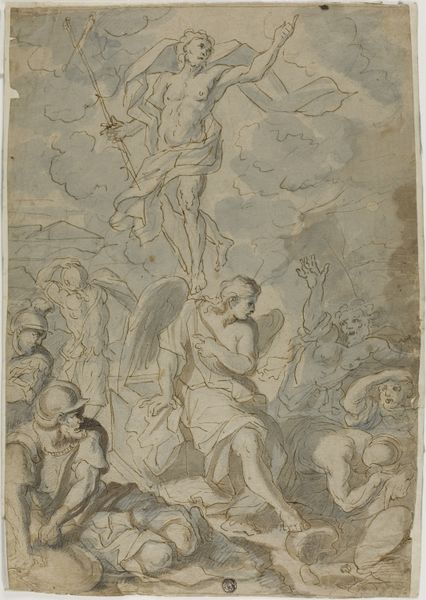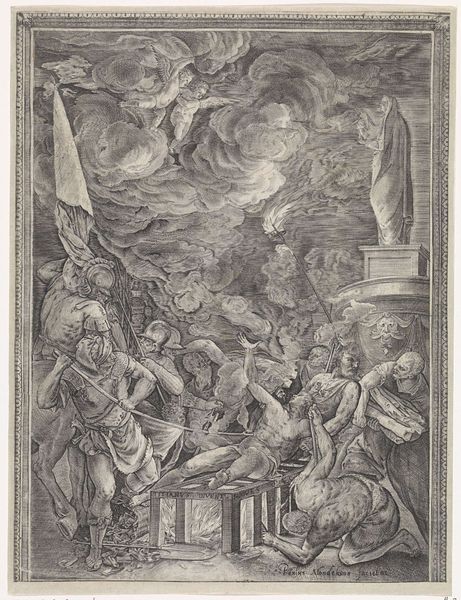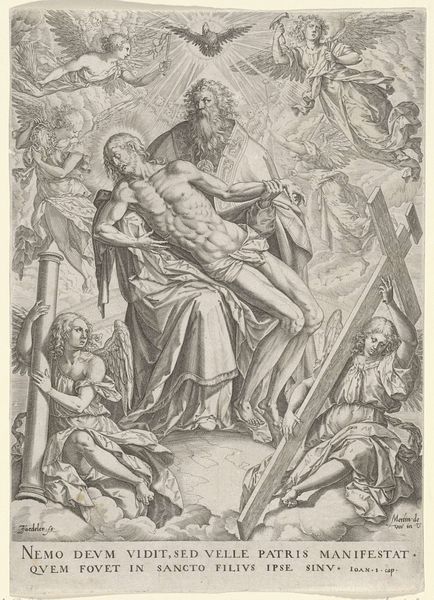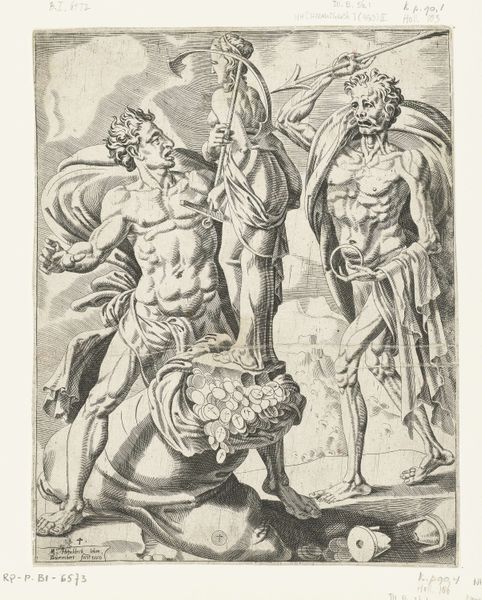
drawing, print, paper, ink, pencil, chalk, charcoal, black-chalk
#
portrait
#
drawing
# print
#
charcoal drawing
#
figuration
#
paper
#
11_renaissance
#
charcoal art
#
oil painting
#
ink
#
pencil
#
chalk
#
charcoal
#
history-painting
#
academic-art
#
charcoal
#
italian-renaissance
#
black-chalk
Dimensions: 319 × 217 mm
Copyright: Public Domain
Editor: Here we have Santi di Tito’s "Study for the Resurrection," created around 1574. It’s a drawing using charcoal, black chalk, and ink on paper. What immediately strikes me is the stark contrast between the chaotic scene at the bottom and the serene figure floating above. How do you interpret this work? Curator: It is indeed a powerful piece. Note the descending diagonal of the risen Christ piercing into the dense, twisting bodies below – a classical symbol of victory over the chaos of mortality. Consider the historical moment, though. This image appears during the Counter-Reformation. Editor: So, it's more than just a depiction of a biblical story? Curator: Precisely. Look at the almost exaggerated dynamism of the figures. Do you see how their gestures seem to express anguish? Di Tito uses the established visual language of the Resurrection, but infuses it with a renewed emotional urgency. The iconographic message here reaffirms the Catholic Church's triumph over earthly turmoil and spiritual doubt at the time. He also uses light masterfully here, drawing attention. What is being illuminated and why? Editor: Well, Christ, first and foremost. His body seems to emanate light. The light appears to also strike the upturned faces, directing our gaze to the symbolic possibilities offered. Curator: And the small details that appear under that light carry an extraordinary burden of meaning, as well as compositional direction. These figures almost tumble out of the darkness and into His radiance, participating in and amplifying its drama. Editor: It's fascinating how a single image can hold so much layered meaning. I'll never look at Renaissance art the same way again. Curator: Indeed! It invites contemplation not just on the divine, but on the enduring human quest for hope amidst the shadows. A new vision of hope can only emerge through art's continued reflections on culture's layered narratives and shared symbols.
Comments
No comments
Be the first to comment and join the conversation on the ultimate creative platform.
